
Quake II is a 1997 first-person shooter video game developed by id Software and published by Activision. It is the second installment of the Quake series, following Quake.
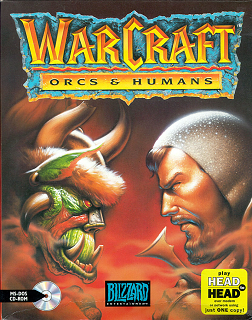
Warcraft: Orcs & Humans is a real-time strategy game (RTS) developed and published by Blizzard Entertainment, and published by Interplay Productions in Europe. It was released for MS-DOS in North America on 15 November 1994, and for Mac OS in early 1996. The MS-DOS version was re-released by Sold-Out Software in 2002.
Real-time strategy (RTS) is a subgenre of strategy video games that does not progress incrementally in turns, but allow all players to play simultaneously, in "real time." By contrast, in turn-based strategy (TBS) games, players take turns to play. The term "real-time strategy" was coined by Brett Sperry to market Dune II in the early 1990s.
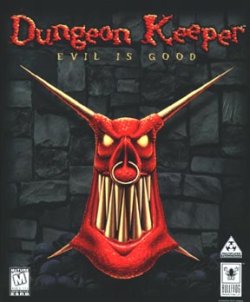
Dungeon Keeper is a strategy video game developed by Bullfrog Productions and released by Electronic Arts in June 1997 for MS-DOS and Windows 95. In Dungeon Keeper, the player builds and manages a dungeon, protecting it from invading 'hero' characters intent on stealing accumulated treasures, killing monsters and ultimately the player's demise. The ultimate goal is to conquer the world by destroying the heroic forces and rival dungeon keepers in each realm. A character known as the Avatar appears as the final hero. Dungeon Keeper uses Creative Technology's SoundFont technology to enhance its atmosphere. Multiplayer with up to four players is supported using a modem, or over a local network.
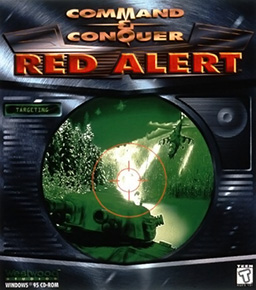
Command & Conquer: Red Alert is a real-time strategy video game in the Command & Conquer franchise, developed and published by Westwood Studios in 1996. The second game to bear the Command & Conquer title, Red Alert is the prequel to the original Command & Conquer of 1995, and takes place in the alternate early history of Command & Conquer when Allied Forces battle an aggressive Soviet Union for control over the European mainland.
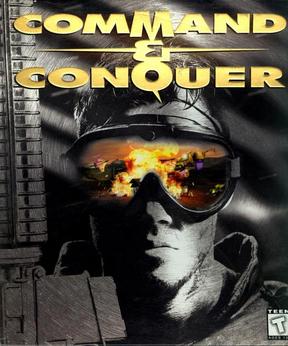
Command & Conquer is a real-time strategy video game developed and published by Westwood Studios in 1995. Set in an alternate history, the game tells the story of a world war between two globalized factions: the Global Defense Initiative of the United Nations and a revolutionary militant organization called the Brotherhood of Nod, led by the mysterious Kane.

Carrier Command is a 1988 video game published by Rainbird for the Amiga, Atari ST, IBM PC compatibles, ZX Spectrum, Macintosh, Commodore 64, and Amstrad CPC. Carrier Command is a cross between a vehicle simulation game and a real-time strategy game where players control a robotic aircraft carrier.
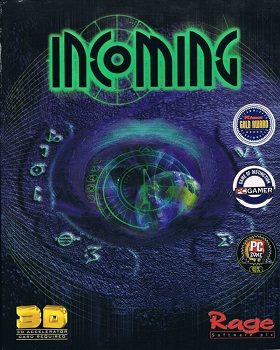
Incoming is a 3D shooter video game developed and published by Rage Software. The game was first released for Microsoft Windows in mid-1998, and was followed by a Dreamcast version, which was released in Japan on December 17, 1998, in Europe on October 14, 1999, and in North America on September 15, 1999. Set in the near-future of 2009, the game primarily revolves around controlling vehicles and turrets to fight alien invaders of Earth in one of the campaign modes, the arcade mode, and with or against another player. Some levels include brief real-time strategy segments.

Sacrifice is a real-time strategy video game published by Interplay Entertainment in 2000 for Microsoft Windows platform. Developed by Shiny Entertainment, the game features elements of action and other genres. Players control wizards who fight each other with spells and summoned creatures. The game was ported to Mac OS 9.2 in 2001.

Madden NFL 97 is a football video game released in 1996. It was the first Madden game released for the PlayStation and Sega Saturn. 16-bit versions were also made for the established Super NES and Genesis platforms, as well as a portable version for the Game Boy.

Fragile Allegiance is an open-ended 4X real-time strategy (RTS) game from Gremlin Interactive, released in 1996 for MS-DOS and Windows 95. The game begins on May 25, 2496, as the player begins their employment with TetraCorp who have set up a new asteroid mining franchise operation in the Fragmented Sectors. There are six alien races competing with Tetracorp for these resources. Beginning with one building and one million credits, the player is tasked with building up a successful mining operation to sell as much ore as possible to the Federation. Diplomacy is crucial to the success or failure of this franchise operation as the players' colonies begin to encroach on one another.

Bomberman, also known as Dyna Blaster in Europe, is an action-maze video game originally developed and published by Hudson Soft for the PC Engine in Japan on 7 December 1990 and later in North America for the TurboGrafx-16 by NEC in 1991. Belonging to the Bomberman franchise, it is a re-imagining of the first game in the series starring White Bomberman on a quest to rescue Lisa, the kidnapped daughter of his inventor Dr. Mitsumori, from the castle of Black Bomberman while defeating evil monsters and villains that work for him. The game was later ported to home computers, each one featuring changes compared to the original version. Conversions for other platforms were in development but never released. The title garnered positive reception from critics since its initial release on the PC Engine/TurboGrafx-16 and later on home computers.
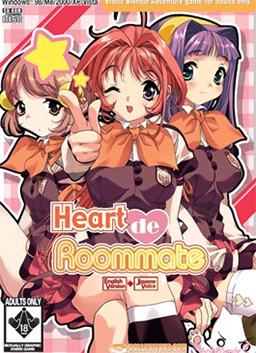
Heart de Roommate (はあとdeルームメイト) is a Japanese adult visual novel developed by AngelSmile for Microsoft Windows. It was released in Japan in January 2002, and later received an English translation by G-Collections in 2004. The game was re-released by Jast USA in 2022 as Heart de Roommate Remastered, an updated version with enhanced visuals and support for the macOS and Linux operating systems.

Burning Soldier is a 1994 rail shooter video game developed by Genki and originally published by Panasonic and Pack-In-Video in North America, Japan and Europe exclusively on 3DO. The first title created by Genki for the 3DO platform, the game is set in a futuristic Solar System in 2095 where a war against humanity erupts with the arrival of the Kaisertian alien race, as players assume the role of an Earth Defense Force fighter pilot taking control of the mecha-style Strike space fighter craft in an effort to overthrow the invaders and end the conflict. Its gameplay mainly consists of shooting mixed alongside full motion video with sprite-based enemies imposed on them using a main two-button configuration.
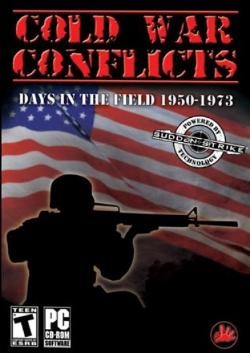
Cold War Conflicts, known in Russia as Confrontation: Asia on fire is a real-time strategy game developed by Russian studios Fireglow Games and Red Ice software, set in the historical period of the Cold War era from 1950 to 1973. In four campaigns the players take control of the military forces of eight nations. Some of the campaigns are non-linear which means that success or failure in some missions results in a different starting point and strength of military forces in the following mission. The game is designed to present an accurate account of battlefield warfare, so most missions must be accomplished using a limited number of available units and supplies; the focus is on real military strategy and tactics, instead of resource gathering and base development.

Sudden Strike, also known in Russia as Confrontation III, is a real-time tactics computer game set in World War II and the first game in the Sudden Strike series. Released in 2000, the game was developed by Fireglow based in Russia and published by CDV Software of Germany. In Russia, the game was marketed as a sequel to the 1996 real-time tactics game Counter Action, made by many of the same developers.

Skull Caps is a 1998 real-time strategy video game developed by Creative Edge Software and published by Ubi Soft for Microsoft Windows. It is a follow-up to Baldies (1995). In the game, the player manages a community of Skullies in order to build structures, increase their population, and create weapons to fight against enemies known as Hairies. There are four classes of Skullies and each structure has specific properties to assist the player. Its gameplay combines strategy with simulation and god game elements. Up to four players can participate in a multiplayer mode via local area network (LAN).

Blade Force is a 1995 third-person shooter simulation video game developed by Studio 3DO and published by The 3DO Company in North America, Europe and Japan exclusively on the 3DO format. Set on a dystopian sci-fi future in the year 2110, where the fictional city of Meggagrid has been overrun by criminals, the player is equipped with a flight suit created by scientist Dr. Franz Grubert known as the HeliPak in an attempt to overthrow the main criminal organization led by the Pitt family and bring order back to the metropolis. Its gameplay mainly consists of shooting action in third-person with six degrees of freedom using a main five-button configuration.
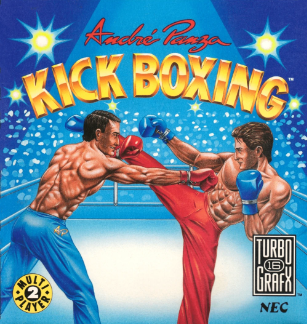
Panza Kick Boxing is a French fighting video game developed by Futura and originally published by Loriciels in 1991. The game is a video game adaptation of Thai kick boxing. It received high critical praise particularly for its graphics and gameplay while receiving minor criticism for its repetitiveness. A sequel with various names to distance from the Panza endorsement, including Best of the Best: Championship Karate in the United States, was released a few years later.
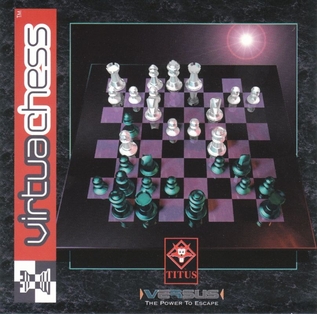
Virtua Chess is a 1995 chess video game developed and published by Titus France SA for the MS-DOS. It was later ported to Windows. Two sequels were released: Virtual Chess 2 for the Windows in 1997 and Virtual Chess 64 for the Nintendo 64 in 1998.



















